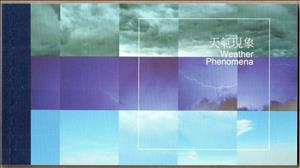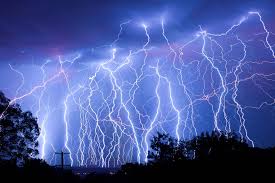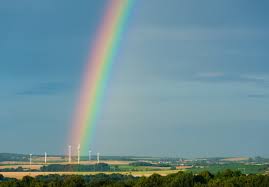Booklet: Weather Phenomena (Hong Kong 2014)
Weather Phenomena (Hong Kong 2014)
27 March (Hong Kong ) within release Weather Phenomena goes into circulation Booklet Weather Phenomena face value 53 Hong Kong dollar
| Booklet Weather Phenomena in catalogues | |
|---|---|
| Stanley Gibbons: | Sg: HK SP20 |
Booklet is square format.
Contains 3 pane booklet with SG numbers 1856 to 1861 and MS1862 Face value of stamps 23.10 HK$Also in the issue Weather Phenomena:
- Stamp - Rainbow face value 1.70;
- Stamp - Frost face value 2.20;
- Stamp - Cloud face value 2.90;
- Stamp - Lightning face value 3.10;
- Stamp - Fog face value 3.70;
- Stamp - Rain face value 5;
- Stamp - Typhoon face value 5;
- Souvenir Sheet - Typhoon face value 20;
- Souvenir Sheet - Typhoon face value 5;
- Souvenir Sheet - Typhoon face value 20;
- Booklet - Weather Phenomena face value 53;
Booklet Weather Phenomena it reflects the thematic directions:
In meteorology, a cloud is an aerosol consisting of a visible mass of miniature liquid droplets, frozen crystals, or other particles suspended in the atmosphere of a planetary body or similar space. Water or various other chemicals may compose the droplets and crystals. On Earth, clouds are formed as a result of saturation of the air when it is cooled to its dew point, or when it gains sufficient moisture (usually in the form of water vapor) from an adjacent source to raise the dew point to the ambient temperature.
Meteorology is a branch of the atmospheric sciences (which include atmospheric chemistry and physics) with a major focus on weather forecasting. The study of meteorology dates back millennia, though significant progress in meteorology did not begin until the 18th century. The 19th century saw modest progress in the field after weather observation networks were formed across broad regions. Prior attempts at prediction of weather depended on historical data. It was not until after the elucidation of the laws of physics, and more particularly in the latter half of the 20th century, the development of the computer (allowing for the automated solution of a great many modelling equations) that significant breakthroughs in weather forecasting were achieved. An important branch of weather forecasting is marine weather forecasting as it relates to maritime and coastal safety, in which weather effects also include atmospheric interactions with large bodies of water.
A rainbow is an optical phenomenon caused by refraction, internal reflection and dispersion of light in water droplets resulting in a continuous spectrum of light appearing in the sky. The rainbow takes the form of a multicoloured circular arc. Rainbows caused by sunlight always appear in the section of sky directly opposite the Sun. Rainbows can be caused by many forms of airborne water. These include not only rain, but also mist, spray, and airborne dew.
A storm is any disturbed state of the natural environment or the atmosphere of an astronomical body.[citation needed] It may be marked by significant disruptions to normal conditions such as strong wind, tornadoes, hail, thunder and lightning (a thunderstorm), heavy precipitation (snowstorm, rainstorm), heavy freezing rain (ice storm), strong winds (tropical cyclone, windstorm), wind transporting some substance through the atmosphere such as in a dust storm, among other forms of severe weather.




